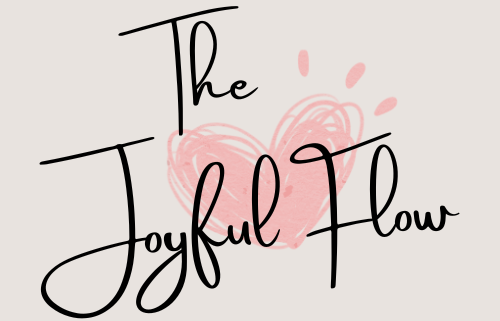We all have habits we’d like to change – whether it’s eating healthier, exercising more, or reducing screen time. The good news is that it’s possible to break a habit in 21 days with focus and dedication. Let’s explore how the “21 day rule” can serve as an empowering guide on your journey toward positive change.

The 21 Day Habit Theory
The idea that it takes 21 days to form or break a habit is commonly cited. This concept originated from Dr. Maxwell Maltz’s observations in the 1960s, which he noted in his book “Psycho-Cybernetics.” He found that it took a minimum of about 21 days for an old mental image to dissolve and a new one to jell. While research shows it actually takes at least 66 days for a new behavior to become fully automatic, the 21 day rule still serves as a useful benchmark and motivational guideline.
Setting a goal to stick to a new routine for 21 days provides a concrete timeline to focus on. It also breaks the habit change process into smaller, more manageable chunks. Focusing on 21 days at a time can help you maintain motivation compared to thinking about a months-long or lifelong change. This approach can be particularly helpful for those who feel overwhelmed by the prospect of making a permanent change.
Understanding the Habit Loop
To effectively break a habit, it’s important to understand the habit loop. This concept, popularized by Charles Duhigg in his book “The Power of Habit,” explains that each habit consists of three components: a cue, a routine, and a reward. The cue triggers the habit, the routine is the behavior itself, and the reward is what your brain gets out of it, which reinforces the habit loop.
By identifying your habit loops, you can begin to unravel them. For example, if you’re trying to reduce screen time, you might notice that you automatically reach for your phone when you sit on the couch after work (cue), scroll through social media (routine), and enjoy a sense of relaxation or entertainment (reward). To break this habit, you could replace the routine with a different activity that provides a similar reward, such as reading a book or practicing meditation.
It’s About Consistency, Not Perfection
When trying to break a habit over 21 days, the key is consistency – not perfection. Don’t be discouraged if you slip up or miss a day. Just resume your new routine the next day. Progress happens through small, consistent actions over time.
Focus on each day as a new opportunity to build your desired habit. Don’t get trapped comparing yourself to others or judging your own perceived “lack of progress.” Pat yourself on the back for any positive steps forward. Progress not perfection is the mantra to embrace.
The Power of Self-Discipline
Ultimately, changing a habit requires dedication, commitment, and self-discipline. Strong willpower and motivation alone are often not enough to override ingrained behaviors. That’s why the 21 day guideline is so helpful – it provides a defined time period to summon consistent self-discipline.
To tap into your inner reserves of self-discipline:
- Remind yourself of your reasons for wanting to change. Get clear on your motivations and goals. Write them down where you’ll see them daily for inspiration.
- Eliminate temptation and obstacles to your new routine. Adjust your environment and schedule to make the habit easy to accomplish.
- Celebrate small wins and milestones along the way. Acknowledge yourself for sticking to your new habit for 3 days, 5 days, 1 week, etc.
With focus, commitment, and perseverance, you can leverage the 21 day rule to successfully transform habits and create positive change. The path won’t always be perfect. But each day offers a new opportunity to move yourself closer to your goals through small, consistent actions. You have the power to turn motivation into self-discipline and shape the habits that empower your life.
Creating a Supportive Environment
A supportive environment is crucial when you’re trying to break a habit. Surround yourself with people who understand your goals and are willing to help you achieve them. This could mean joining a community of like-minded individuals, seeking the support of friends and family, or even working with a professional coach or therapist.
Additionally, consider using tools and resources that can aid in your journey. There are numerous apps designed to track progress, provide reminders, and offer encouragement. Books and online articles can also offer strategies and insights. Remember, you’re not alone in this process, and utilizing available resources can make a significant difference.
Understanding the Psychological Aspect
Breaking a habit isn’t just about the physical or behavioral changes; it’s also a psychological process. Habits are deeply ingrained in our psyche, often serving as coping mechanisms or ways to meet emotional needs. It’s important to address these psychological aspects by finding healthy alternatives that fulfill the same needs.
For instance, if you’re trying to quit smoking, which often serves as a stress reliever, you’ll need to find other ways to manage stress. This could involve practicing relaxation techniques, engaging in physical activity, or finding hobbies that help you unwind.
The Role of Identity in Habit Change
Another powerful aspect of habit change is the role of identity. When you start to see yourself as someone who embodies the traits you desire, the habits that align with that identity become more natural. For example, if you begin to view yourself as a healthy eater, making nutritious food choices becomes part of who you are, rather than just something you do.
To foster this identity shift, visualize the person you want to become and start to adopt the behaviors that person would exhibit. Over time, these behaviors will become second nature, and the identity will solidify.
The Importance of Patience and Resilience
Patience and resilience are vital when working to break a habit. There will be setbacks and challenges, but it’s important to stay the course. Each setback is an opportunity to learn and grow. Resilience allows you to bounce back from these moments and continue forward with even greater determination.
Remember that habit change is a journey, that requires time and discipline. It’s about making incremental improvements and celebrating each step in the right direction. With patience, you’ll see that the small changes you make during the 21 days can have a profound impact on your life.
In conclusion, while the 21 day rule may not be a scientifically proven method to break a habit, it serves as a powerful starting point and motivational tool. By understanding the habit loop, focusing on consistency, harnessing self-discipline, creating a supportive environment, addressing psychological needs, embracing a new identity, and practicing patience and resilience, you can leverage the 21 day rule to successfully transform habits and create positive change in your life. The path to breaking a habit is a personal one, filled with unique challenges and triumphs. Embrace each day as a fresh opportunity to progress and remember that you have the power to shape the habits that will empower your life.




